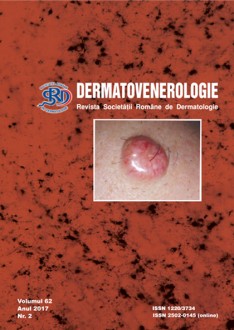Introduction: Historical or neglected tumors are giant tumors with a diameter of more than 5 cm and having a long-term evolution.
Objective: Identification of the existence of these tumors, the social context and psychological factors associated with delay in diagnosis.
Patients and method: 14 patients diagnosed with historical malignant tumors in a period of 8 years in the dermatology office SC Dermamed SRL from Brasov were studied.
Results: Of the 14 patients diagnosed with historical malignant tumors, nine patients were men (64.28%) and five women (35.72%) with a mean age of 76.43 years, the vast majority of patients being retired. As environment of origin eight patients came from rural areas (57.14%) and six were from urban areas (42.86%). Basal cell carcinoma was the most frequent tumor (n=7) followed by squamous cell carcinoma (n=3), B-cell or T-cell lymphoma (n=2), melanoma (n=1) and verrucous carcinoma (n=1). The mean duration of evolution of the tumors until the time of the first consultation was 5.6 years. The average tumor size was 7 cm (from 5.5 cm to 13 cm). The reason that lead the patient to come to consultation was bleeding (n=4), increasing the volume of the tumor (n=3), ulceration (n=4), visualization of bony structures (n=1) and family influence (n=2). Treatment consisted of surgical excision of the tumor in 7 patients, combined with radiotherapy in 3 patients; in 3 patients was performed only radiotherapy and 4 patients refused any form of treatment.
Conclusion: Awareness of general practitioners and care staff might improve the diagnosis of skin tumors in careless patients with such pathology.
Clinical trials and experimental
HISTORICAL MALIGNANT SKIN TUMORS - A STUDY OF 14 CASES


